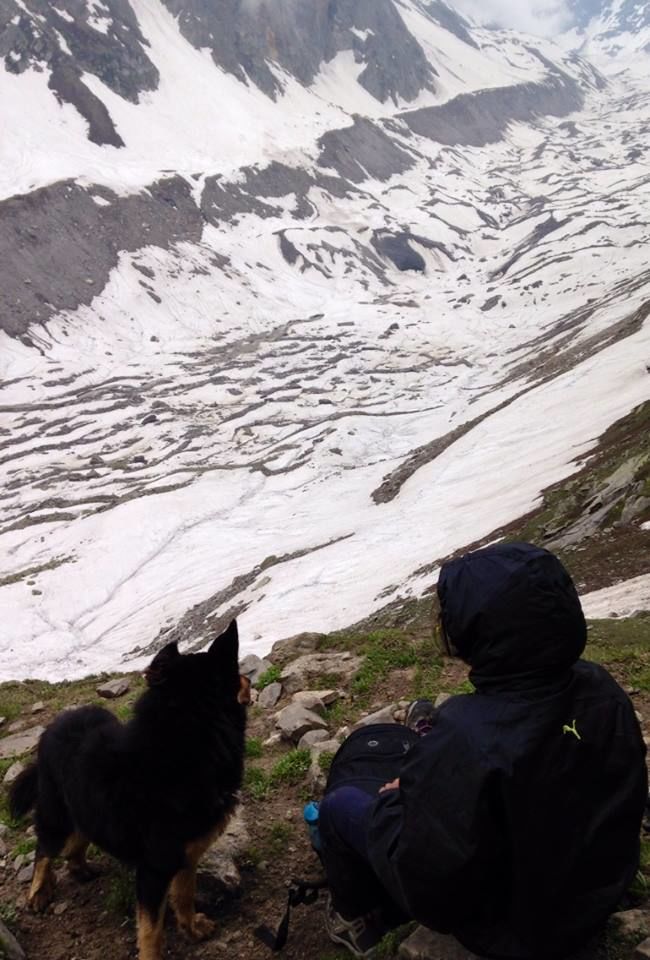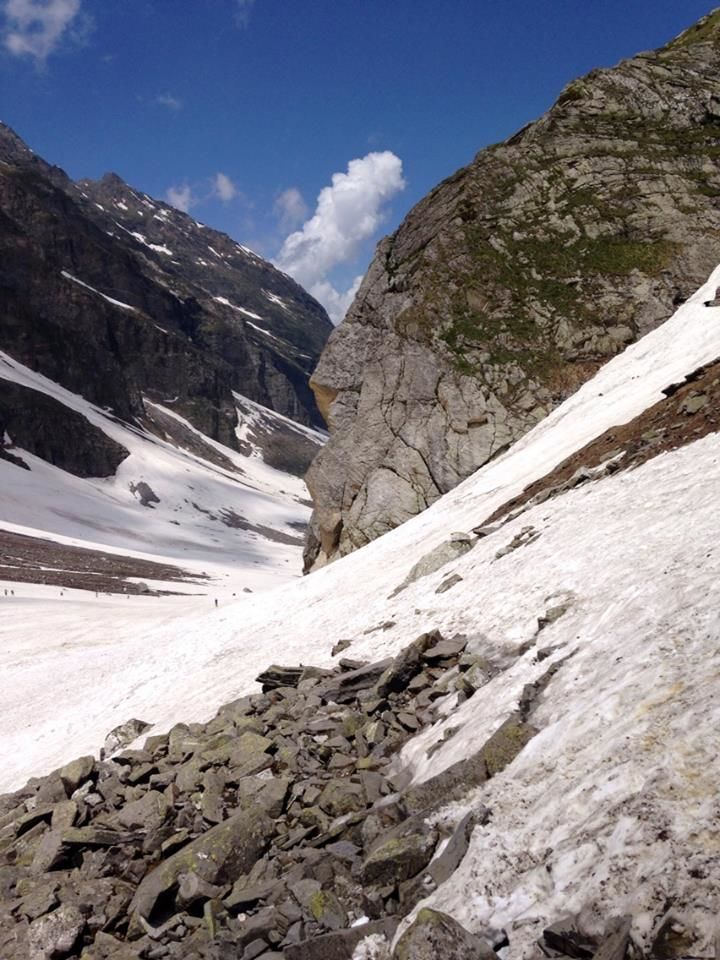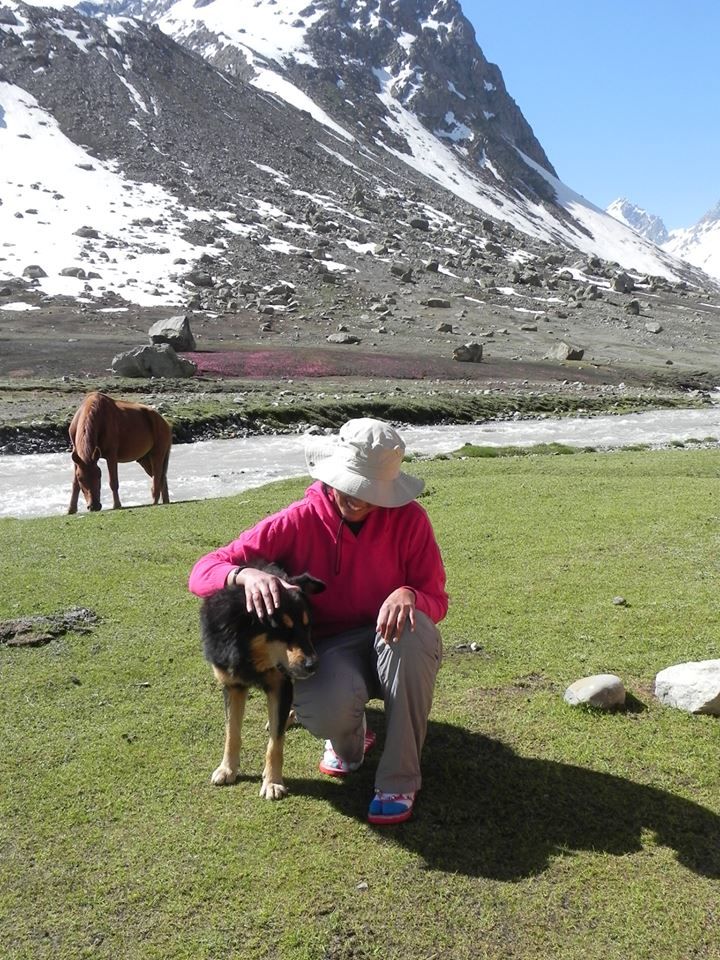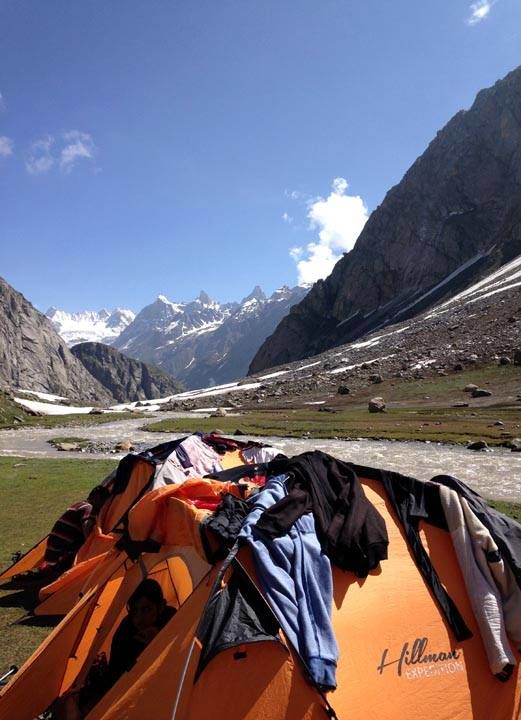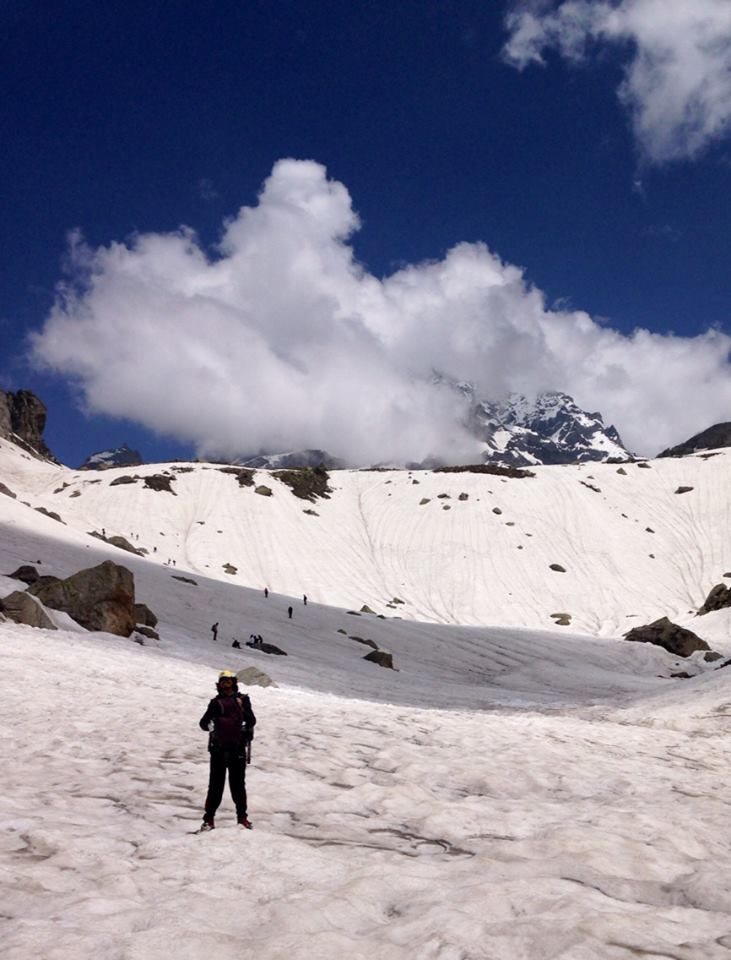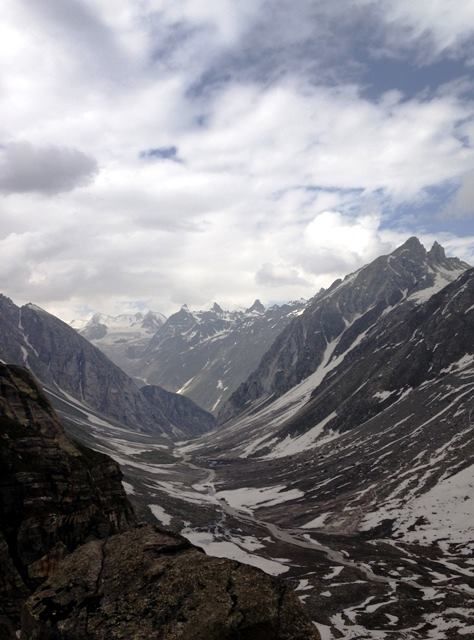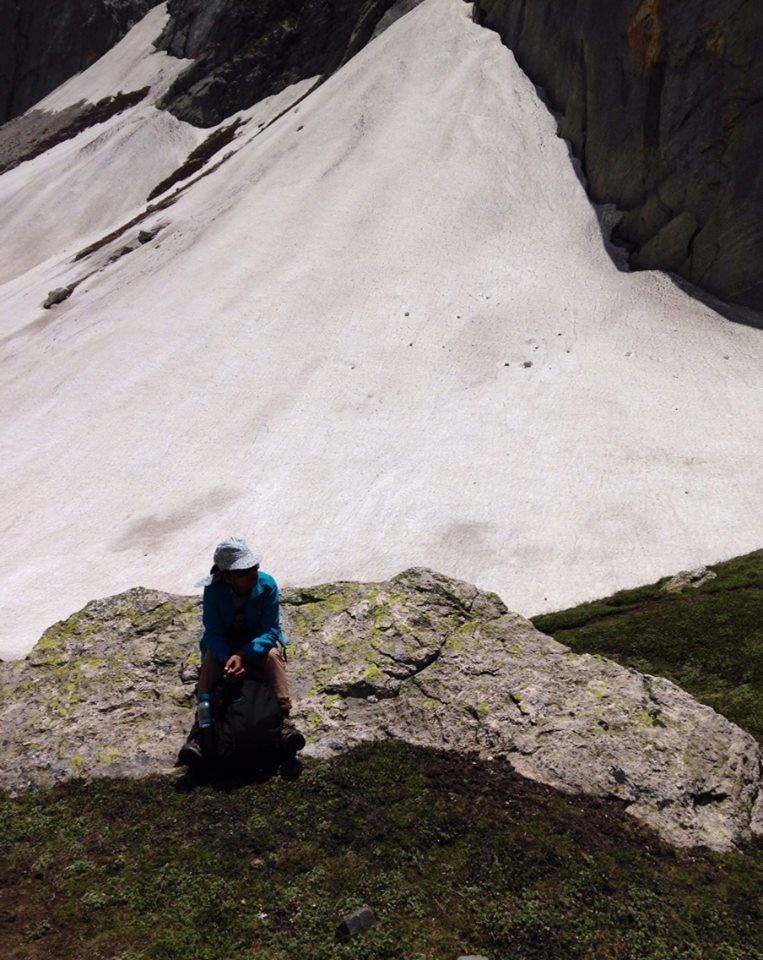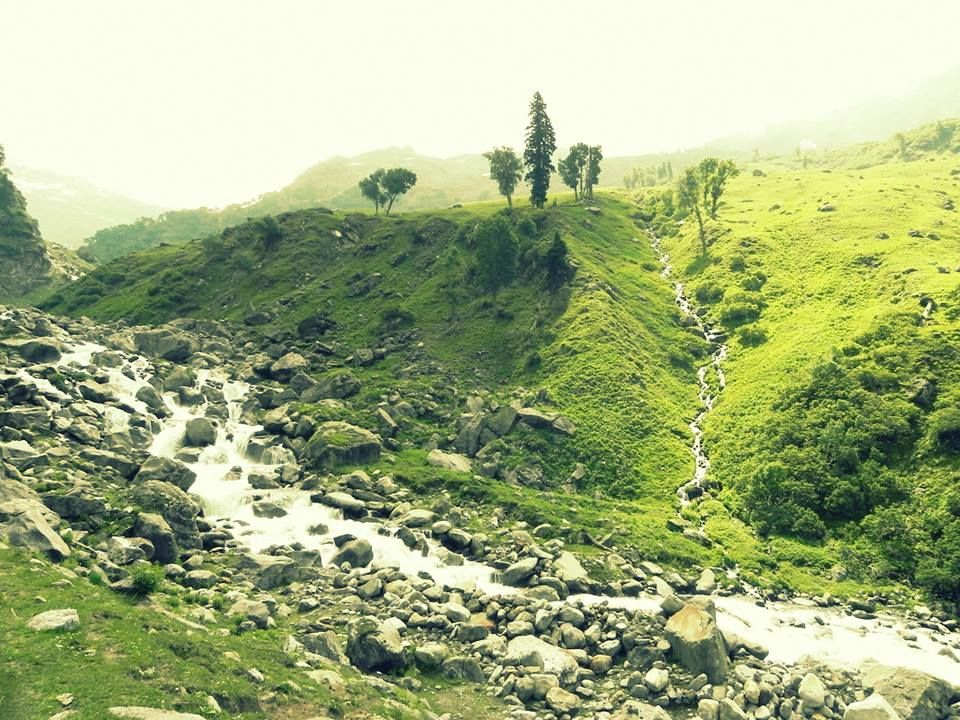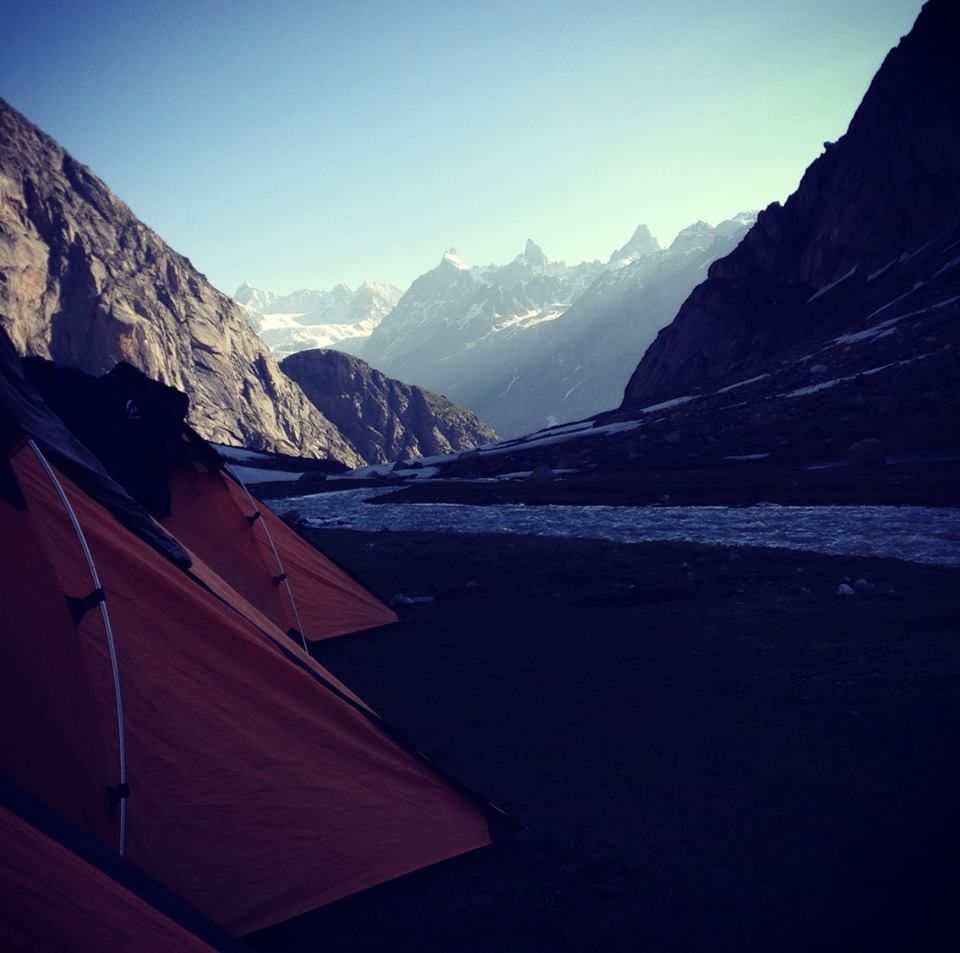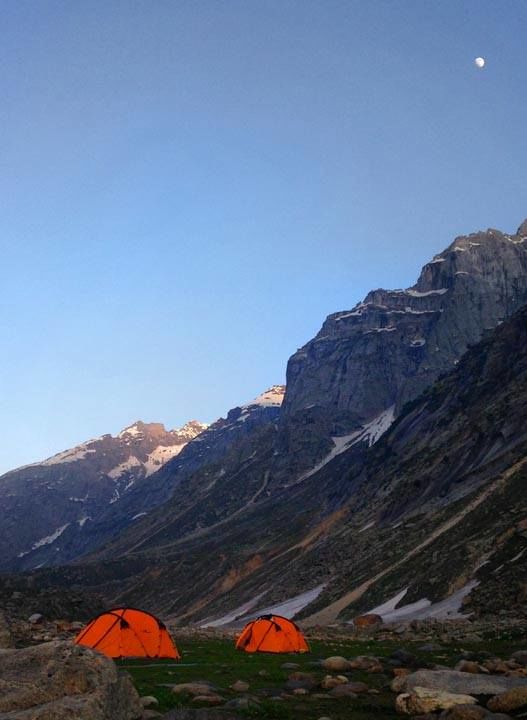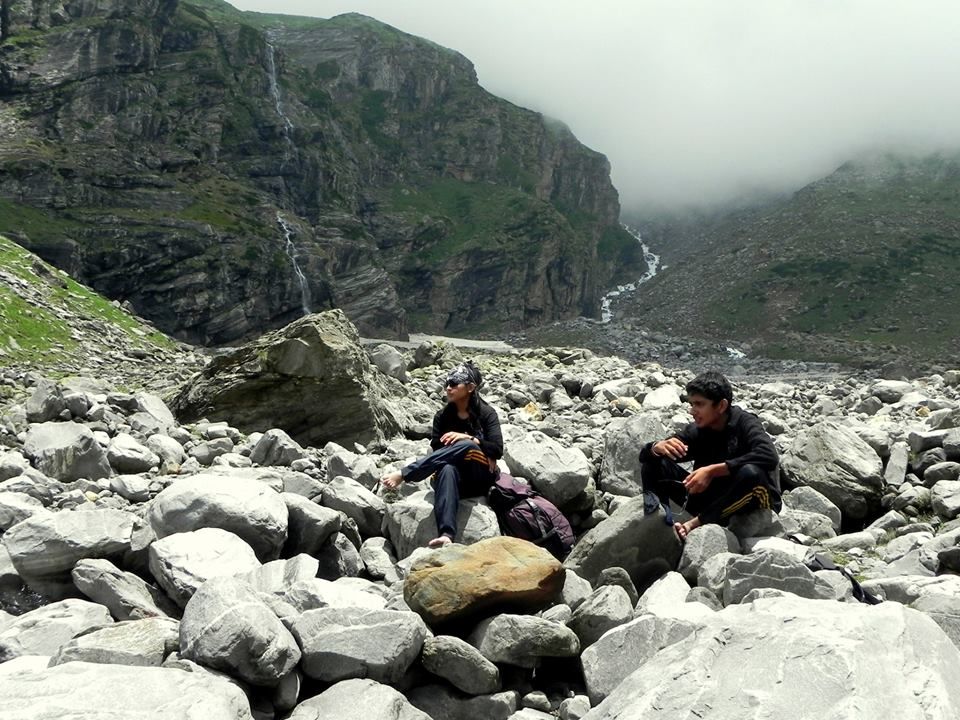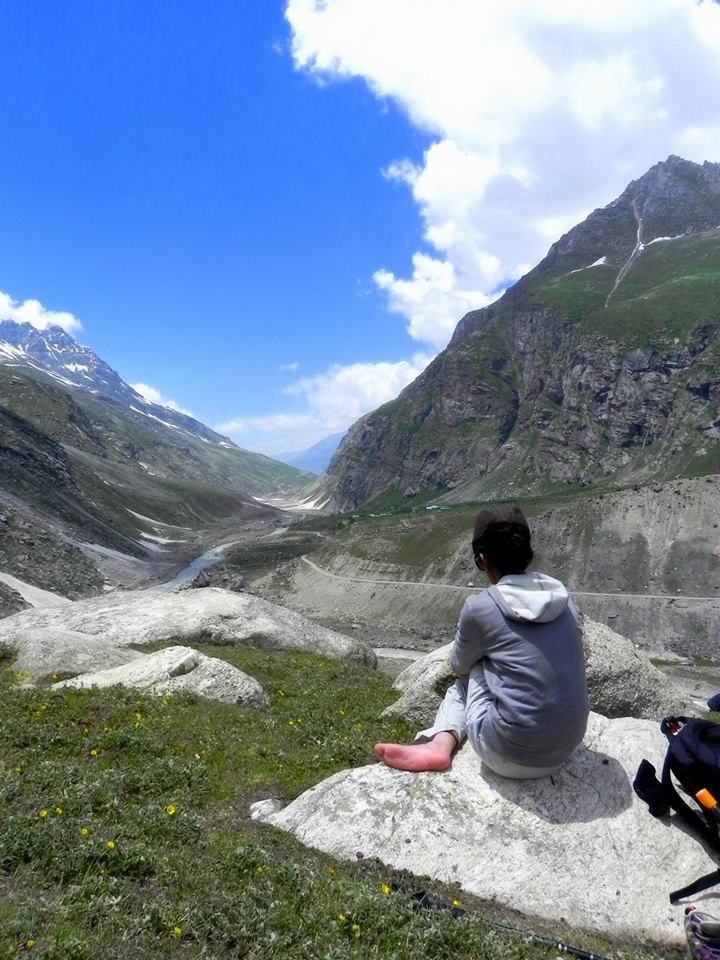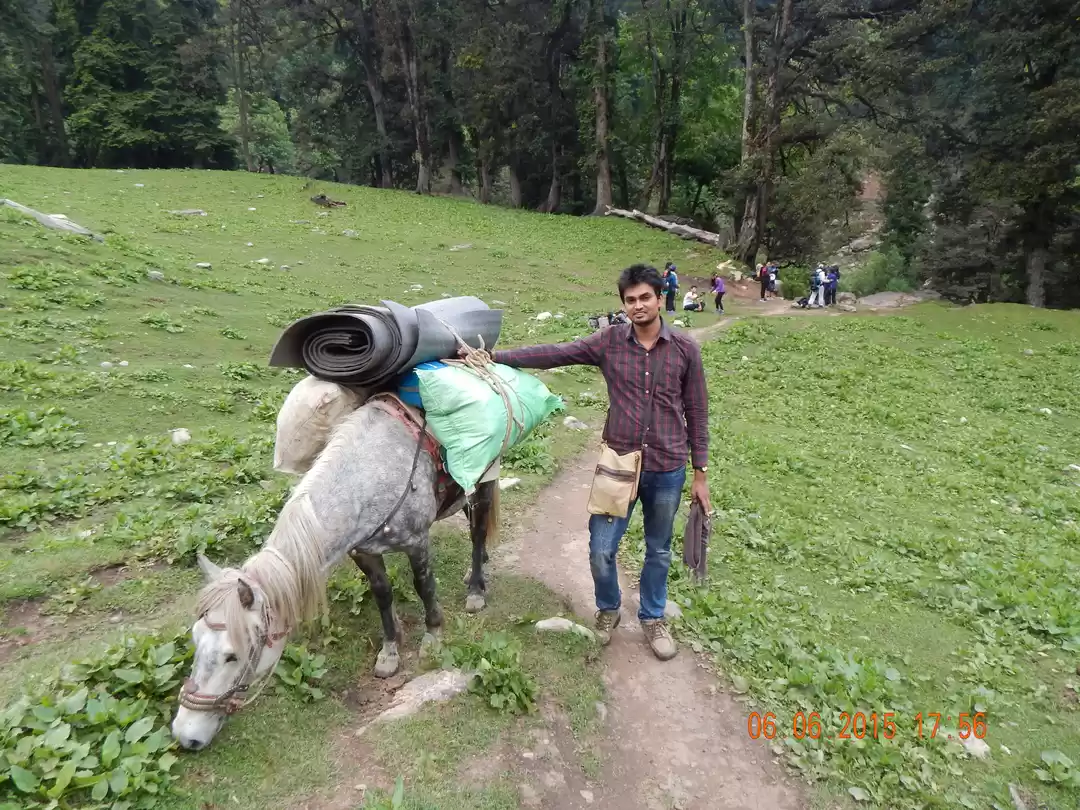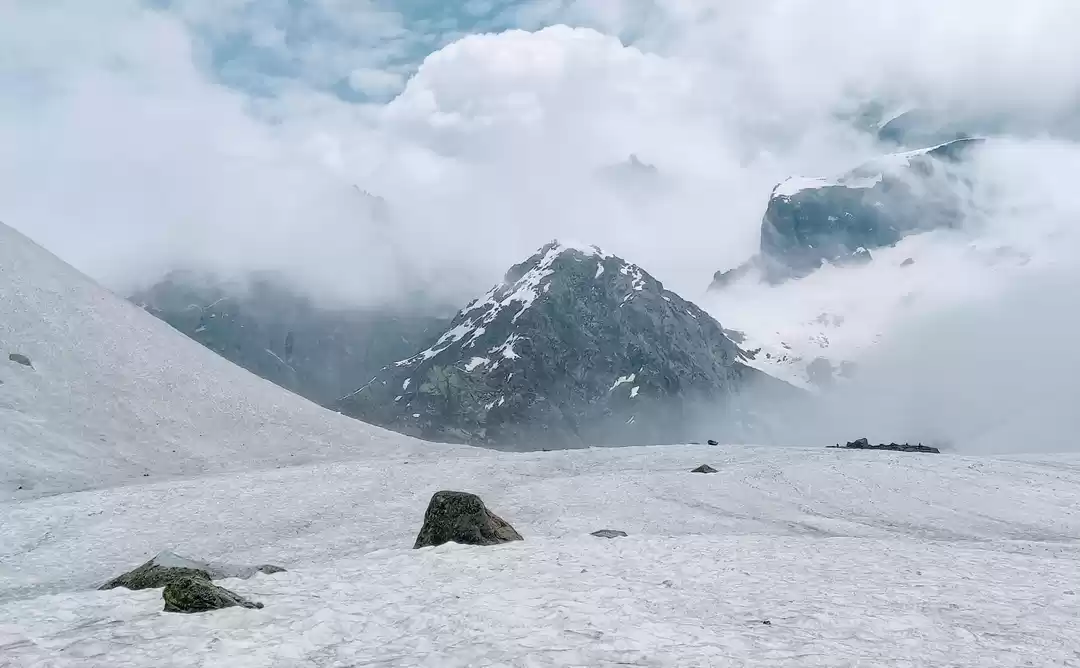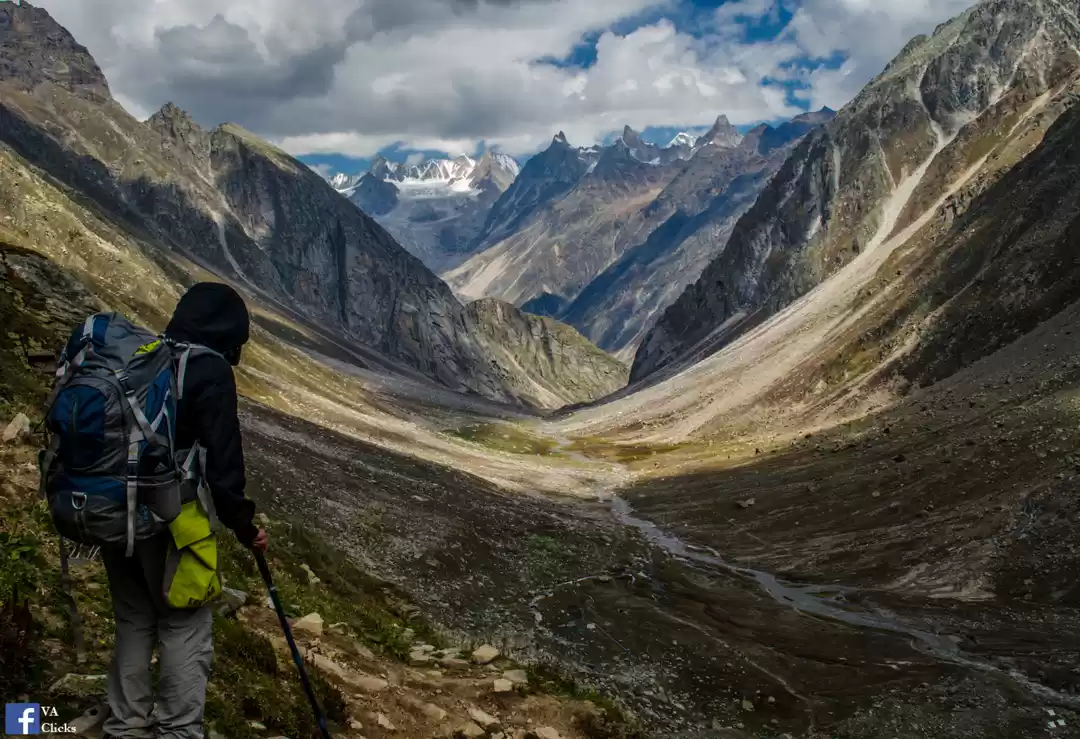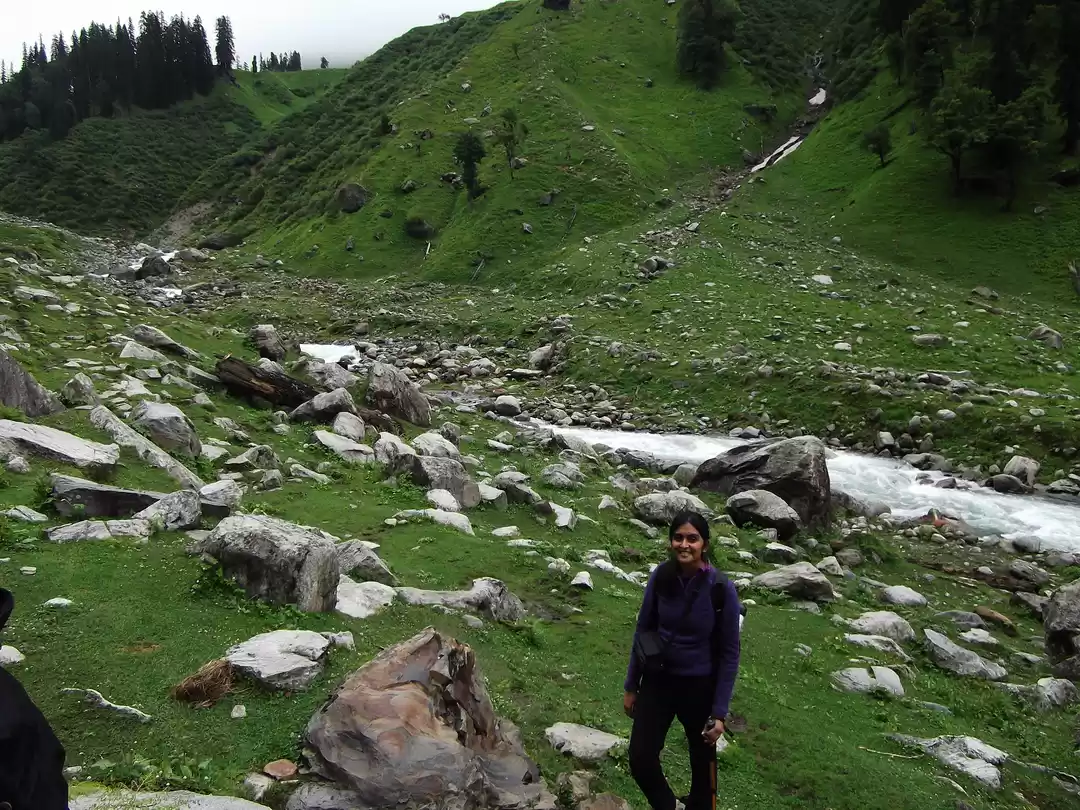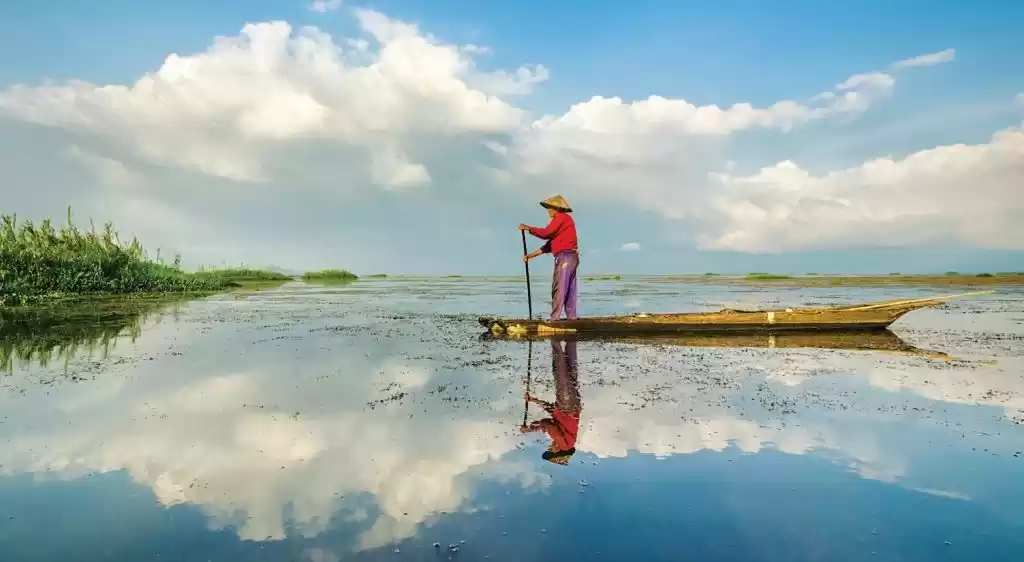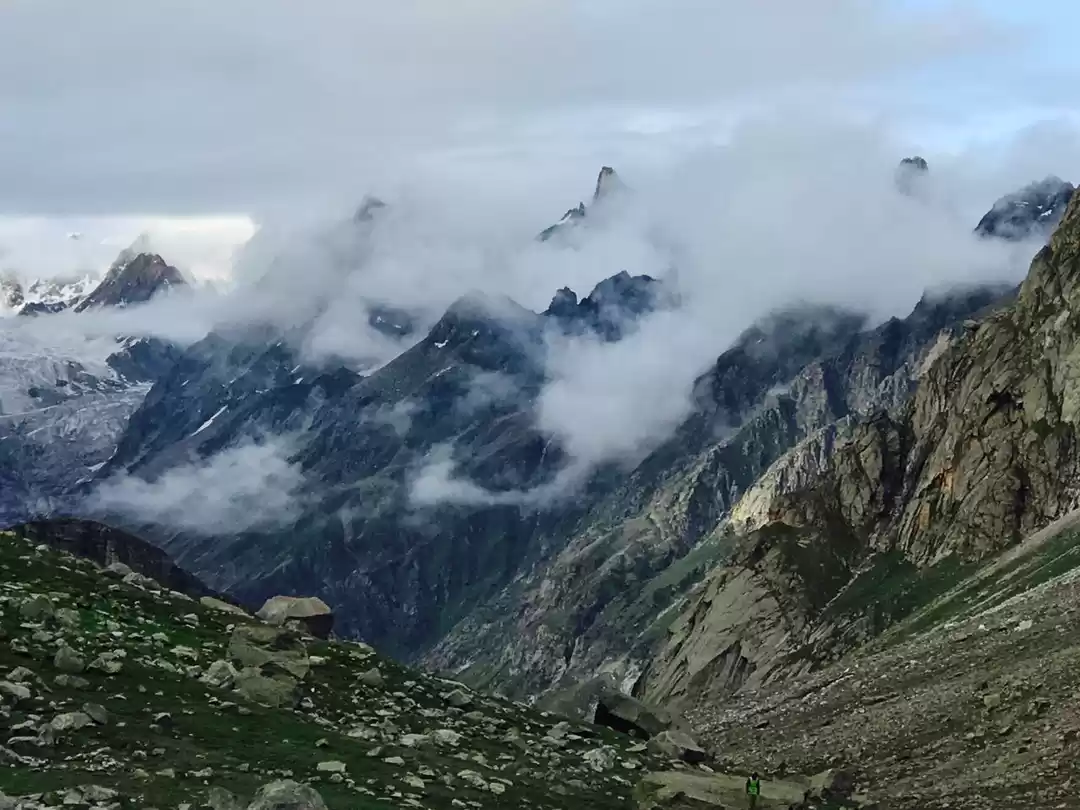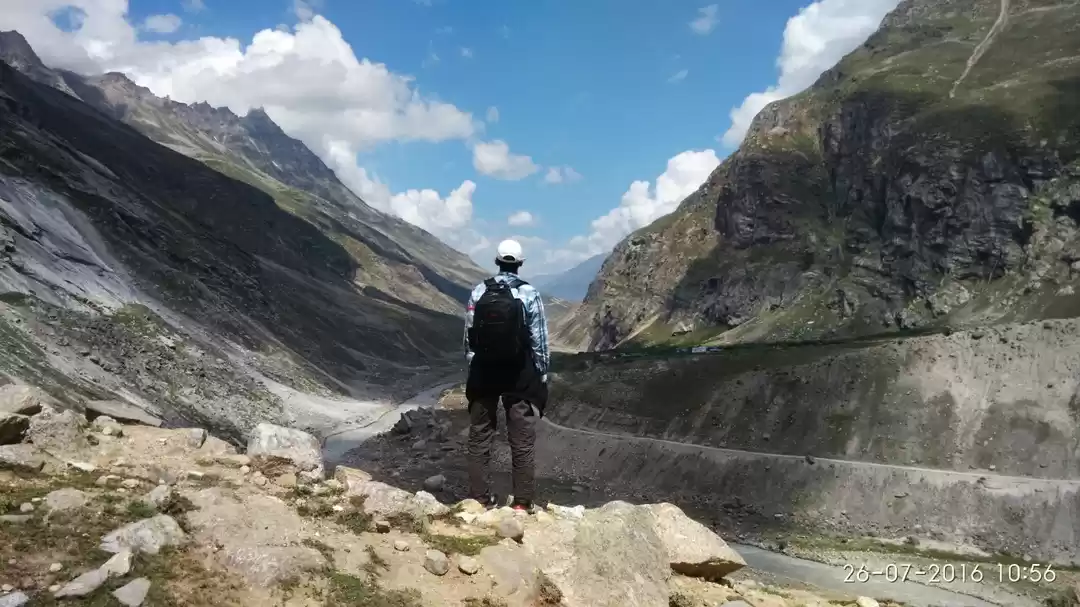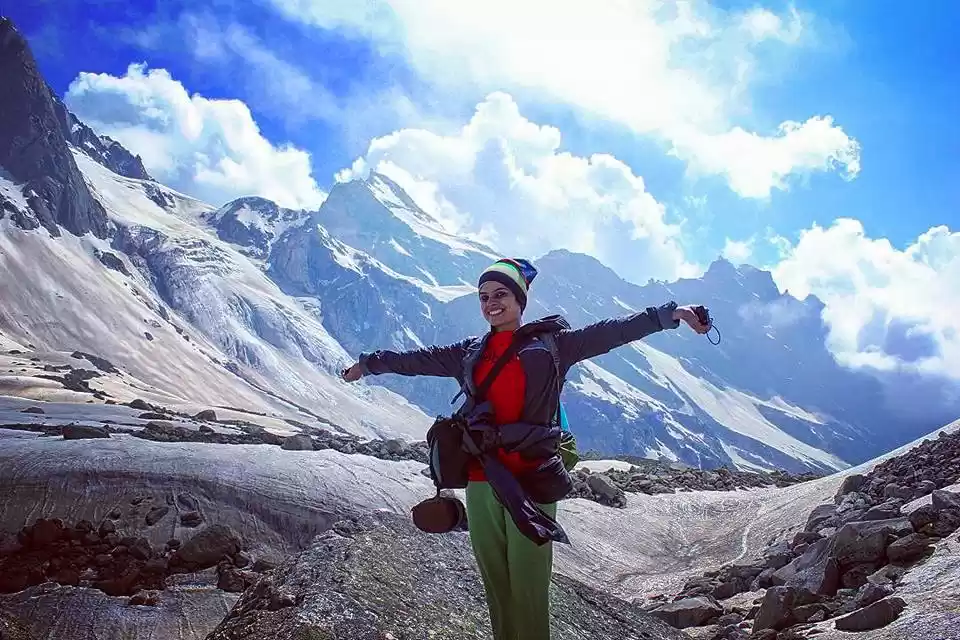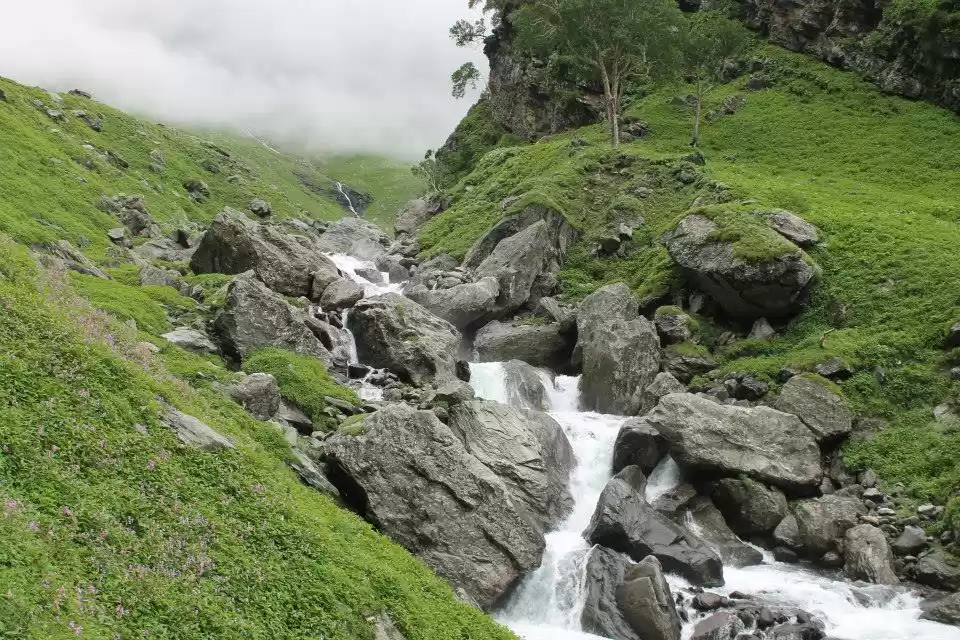It was the first week of July and I was stuffing my woollens into a 60-litre rucksack to catch a bus to Manali. Rains just lashed Delhi the other day and my mom's frantic calls were getting a little too frequent. "Who goes on a trek in the monsoon?" she shrieked at me over the phone, making me momentarily hearing-impaired. But I cross-checked on Google again - a motivating article by the founder of one of India’s better trekking groups, Indiahikes, popped up, reinforcing my decision to pay the Hampta Pass a visit this time of the year. And surely enough, five days later, as I peeked out of my tent at the Balu Ka Ghera, our second campsite on the way to the pass of my dreams, I couldn’t help but thank the article that had me convinced to go for this trek even during the monsoons.
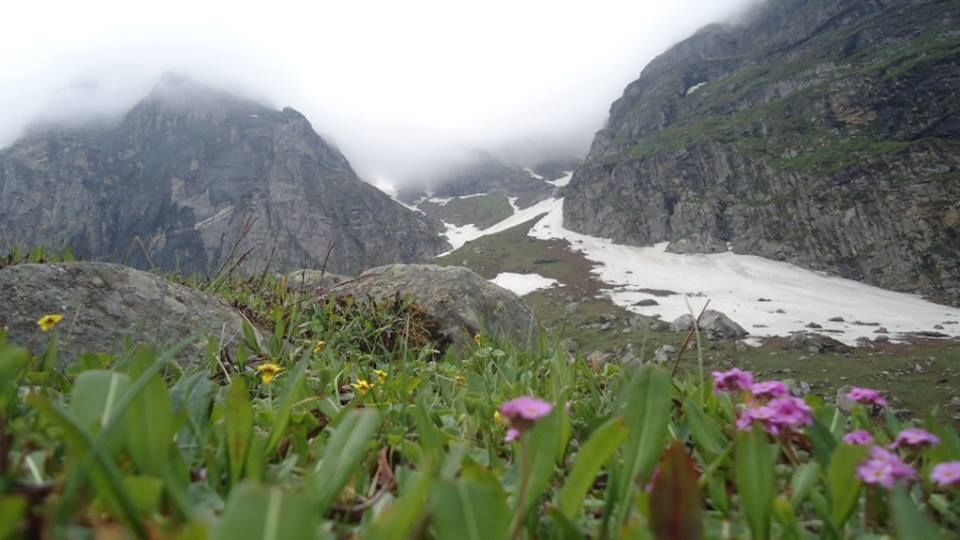
I had woken up amid lush greenery at the foothills of snow-clad mountains, as monsoonal clouds glowed pink and gold in the morning sun. As I nestled a hot cup of tea in my hands, I saw a patch of bright flowers right next to my tent, the grass around it a refreshing shade of light green, glistening with morning dew. This moment of beauty, almost an exclusive part of monsoon treks, set the tone of my first solo trek experience. Taking in every inch of this paradisiacal place, the tranquility pierced only by the call of the occasional cicada and the gurgling of a distant Himalayan stream, I felt the irresistible urge to call up my mother and share this moment of bliss with her. But like every other urban need, the network signal had faltered and died just two days into the trek - and we were now at 10,500 ft. So I did the only thing I could - I clicked a picture for her.
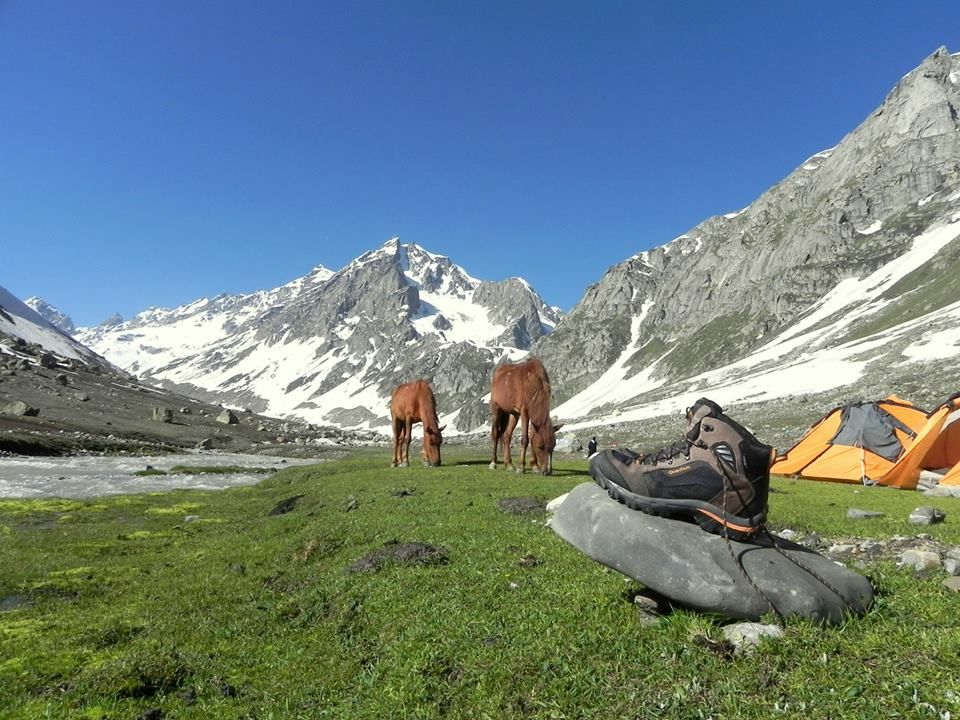
But no image, no matter how good, could convey how insignificant I felt, surrounded by looming mountains and the unsullied beauty of nature. In the narrow valley of Hampta I tried to withstand the rigour of the mighty Chandrabhaga range - as it stared at me and I stared back. In Khaled Hosseini’s words, it squeezed me into something smaller than myself. As we advanced on our trek, a heady mix of emotions seemed to rock my inner being. I couldn't figure out what it was - adrenalin, fear, awe or just the naked beauty unfolding in front of my eyes. We walked in the company of greenery, occasional flower beds and streams till Balu Ka Ghera, but these were soon replaced by nothing but snow, frowning brown boulders and sudden, shadowy mists, as we managed to somehow keep our footing as our sturdy, water proof trek shoes navigated the loose soil beneath them with the constant aide of trek poles. The Rani Nalla, which snaked through the lush green meadows of Jorba, disappeared under a vast snow bridge and I, armed with a strange new enthusiasm, felt more than ready to discover the white marvel.
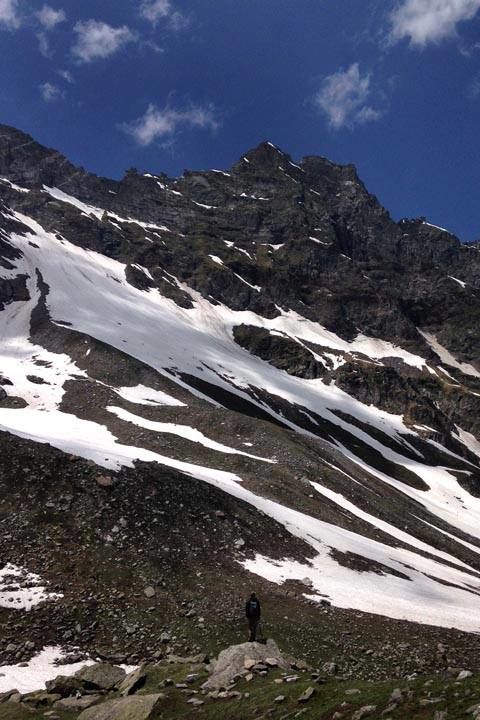
Somewhere in the distance our trek leader Honey Sharma shouted instructions to keep a poncho handy and asked us to get into quick-dry outfits. "There are clouds chasing us," he said, as I caught up, pointing towards the meadows we had camped in on Day 1 of our trek. Sure enough, the fairytale cumulus clouds, now made more sinister by streaks of grey, moved towards us with single-minded determination. The second trek leader in command, Akhil Sharma, called out to the group: "A good part of your trek to the Hampta Pass is over a snow glacier on the Rani Nalla. Please fill up your water bottles here - this is the last place we can collect water till we cross the pass. And that will have to be soon or rains will freeze us to our bones." Saying that, he looked at Honey and grinned but his words had their effect. Our small group of trekkers seemed to come alive in anticipation of the challenge ahead. But I frowned. Just chilly, won’t there be more challenges than that, I wondered out loud. But before Honey could answer, it was our guide Polu Thakur who came to my side, and with all the wisdom of a local, said: "Don’t underestimate the rain, miss. Slippery terrain is not the easiest to navigate, especially if it’s a descent you are charting. But they’re malevolent, the rains - if it leaves you wet, it will also give you enough time to dry up.”
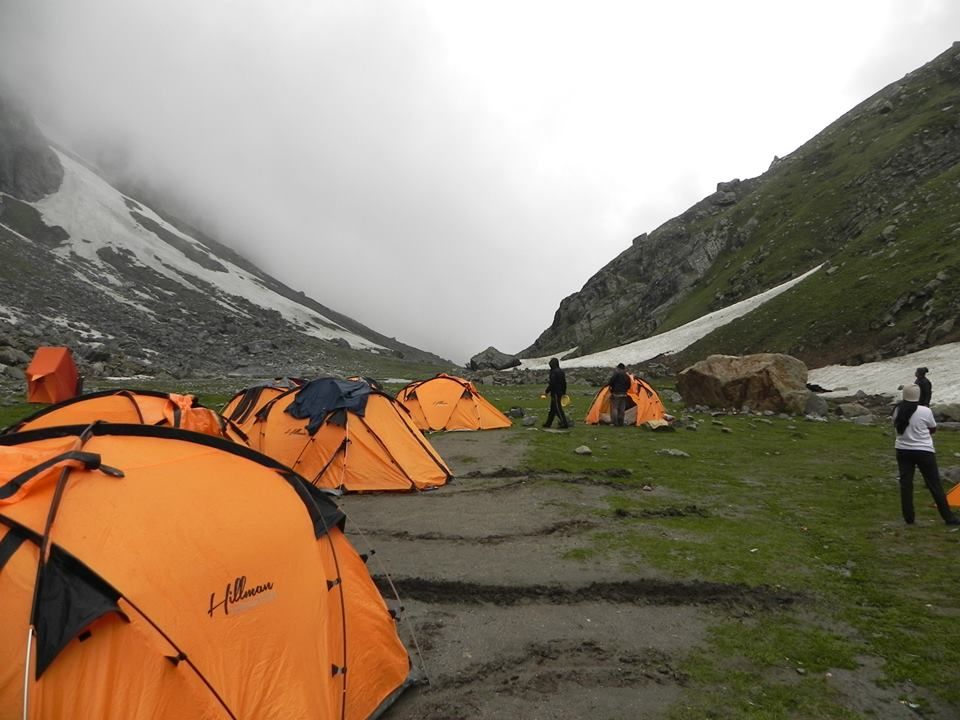
Soon I realised he wasn't wrong. We encountered not rain but a hail storm on our way up and, most of us being clumsy first-timers, got drenched fumbling with the long poncho and its sides. But as Thakur had said, the sun’s warm rays were upon us in a matter of seconds and the warmth couples with our body heat (which was at its peak with all that ascent walk) partially dried the clothes on our body. But our stoicism in the face of nature paid off the next day. The fluffy cumulus pouted like a pretty lady at us and we set for the rest 2,500 feet's ascent over multiple snowy ridges. Most of us were on the mercy of trekking boots or worse still, hiking shoes, either of which did not fit the bill in charting the course on exhaustive snowy ridges. We were handed over pairs of crampons to wear over our shoes. It took us some time to adjust to its uneven grappling hooks and faint jingle but we clung to our trek poles for our dear life and formed a human chain. Hampta Pass was engulfed in white mist. We could barely see the fruits of our labour but a 15-minute break at the pass and the mist departed. You can never be sure of the weather during monsoon. They change like a teen's mood swings, a Casanova's girlfriends, a woman's many flirting partners and a man's eye candies! We could finally see the Hampta pass - a flat snowy plateau.
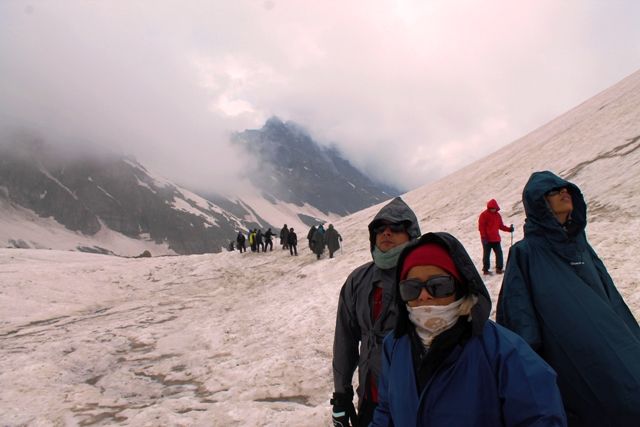
After clicking photos of each other in what have now become customary success shots - with a thumbs-up sign and silly grins plastered across our happy faces - it was time to begin the descent. The way down was far more tricky than the climb up. For one, the descent was almost vertical, through narrow snow ledges and gullies into the open valley of Lahaul-Spiti. At times the sides of the valley were too steep to hike down and we had to drop down to the snow at the valley bottom to continue our descent. The most challenging highlight of the descent, for me, was the snow slide, Glissading as it is called globally, where the trekkers were to slide on the snow on the line of descent. The steep drop was a stuff of the nightmares for me, and to top it all, a drizzle made things more difficult. “Sit on your ponchos and we will give you a push…,” said Polu. I looked at him with just terror in my eyes “…or better still lie down. That’s the best way to slide,” he finished. With that he ended all the hopes of the slide appearing easy like children’s fun slides in the park. I was the first one to go. Damn my attitude to be first in line, everywhere! This definitely turned out to be the line of fire! I chose lying on my navy blue poncho and shut my eyes. Another trek leader with his two assistants waited at the end of the descent to catch trekkers who go out of line and may be straight into the fast flowing glacier at the far end of the drop. I gritted my teeth and tried to think about everything positive, happy and inspiring like mountain gods, maggi and miracles. And there came the push. I had to let go. Struggling or resisting would only delay the drop and possibly throw me out of the line and into some dangerous space like a boulder, thin ice or glacier. I opened my eyes when I felt an obstruction in my way that reduced my speed and brought me to a halt. Thankfully, it was one of trek leader’s assistants’ arms catching hold of me to prevent me sliding a bit further than needed. The worst part of the descent was over for us and now it was just the cold to battle. Battling the chilly winds, we made it to our camp in Shiagoru in the next hour. That was the first time we pitched our tents on snow. "Please wear two layers of track pants,” Akhil reminded us. "If possible, fill your sleeping bag with all the clothes you have in your rucksack. It’ll keep you warm." The temperature had dropped and so had the oxygen level. "Wrap extra mufflers around your feet if woollen socks aren't helping," Honey told us. We were happy to follow orders. At 12,000 feet, and it raining for the better part of the night, that night at Shiagoru was the coldest on the trek.
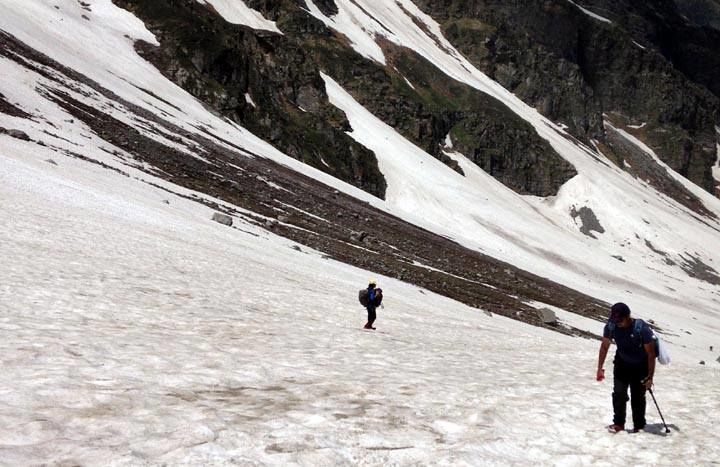
Cut to balancing, tripping, and rolling across glaciers and snow again, to catch the glimpse of civilization in five days. We finally reached Chatru, a tiny hamlet right in the backyard of Rohtang Pass and at the entrance of Spiti valley. A striking feature of Chatru was its formidable boulders, uninviting for tourists but welcoming for climbers. Polu bhaiya was quick to add that the boulders of Chatru are quite popular among adventure seekers. Now when the trek was about to end, people fished for their phones. However, we still could not get any network at Chatru. “BSNL people might get lucky with network but other service providers will have to wait till we cross Rohtang Pass and begin our descent to Manali,” informed Honey.
An abridged version of the article was first published in Air India's in-flight magazine Shubh Yatra
